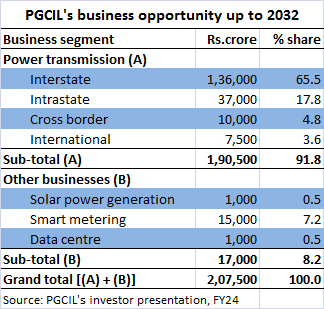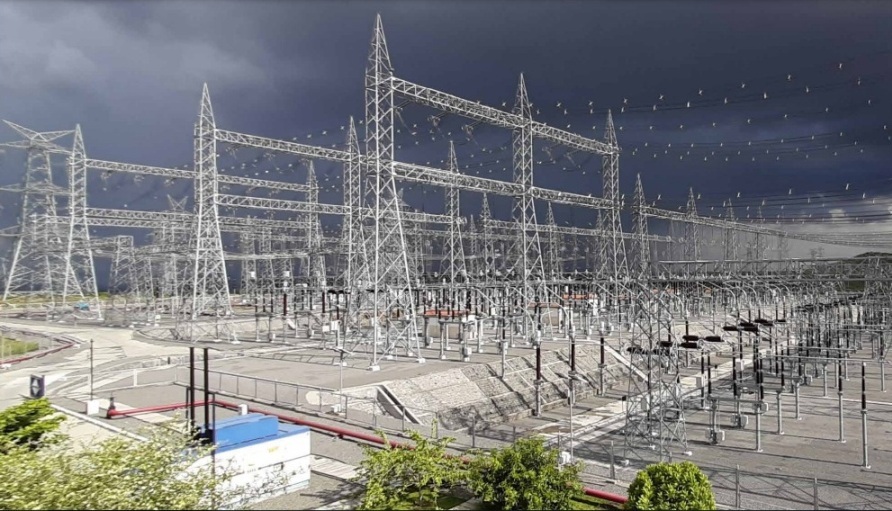Power transmission schemes related to evacuation of renewable energy (RE) account for a dominant proportion of the current “work-in-hand” of Power Grid Corporation of India Ltd (PGCIL).
In an investor presentation, PGCIL said that out of the current work-in-hand of around Rs.86,700 crore, over 80 per cent are related to RE evacuation schemes.
The presentation observed that out of the total work-in-hand, as of May 1, 2024, while Rs.11,200 crore relate to ongoing RTM (regulated tariff mechanism) schemes, another Rs.24,700 crore are towards new RTM schemes. [A new RTM scheme is one that has been assigned to PGCIL but on which no physical work has begun.] The remaining Rs.50,800 crore relates largely to schemes awarded to PGCIL under the tariff-based competitive bidding (TBCB) mechanism.
As discussed in a separate story, PGCIL’s targeted capital expenditure (capex) for FY25 is around Rs.15,000 crore that would include Rs.5,000 crore from RTM projects and the remaining Rs.10,000 crore from TBCB schemes.
Business opportunity
 PGCIL has estimated that it has a business opportunity of around Rs.2,07,500 crore over the next 7-8 years, which is between now and 2032. While PGCIL’s core activity of power transmission dominates this with a share of Rs.1,90,500 crore (or nearly 92 per cent), the remaining Rs.17,000 crore is seen from other activities, mainly smart metering. (See table)
PGCIL has estimated that it has a business opportunity of around Rs.2,07,500 crore over the next 7-8 years, which is between now and 2032. While PGCIL’s core activity of power transmission dominates this with a share of Rs.1,90,500 crore (or nearly 92 per cent), the remaining Rs.17,000 crore is seen from other activities, mainly smart metering. (See table)
During the company’s recent investor meet, R.K. Tyagi, Chairman & Managing Director, PGCIL, clarified that the aforementioned business opportunity of Rs.2,07,500 crore was on the “conservative side”, implying that the actual opportunity size was much more.
As can be seen from the table, the business opportunity size corresponding to interstate transmission schemes is estimated at Rs.1,36,000 crore, accounting for nearly two-thirds of the total. This opportunity basket entails both RTM and TBCB projects.
As far as interstate transmission system (ISTS) projects under the TBCB modality are concerned, FY24 proved very successful for PGCIL. The company’s presentation noted that it won 13 ISTS-TBCB schemes in FY24, which translated to a market share of 65 per cent in terms of aggregate project outlay of all ISTS-TBCB schemes awarded in the year. All the ISTS-TBCB schemes won by PGCIL in FY24 were related to renewable energy evacuation.
Editor’s note: According to an independent study by T&D India published on April 10, 2024, PGCIL won 10 ISTS-TBCB schemes in FY24. The difference of three schemes can be explained thus. T&D India treats a scheme as “awarded” only when the project SPV is formally transferred from the bid process coordinator (BPC) to the successful developer. In PGCIL’s presentation, it strongly appears that three schemes were considered as “won” on the basis of the letter of intent issued by the BPC to PGCIL, even while the formal SPV transfer was pending.
Featured photograph (source: PGCIL) showing PGCIL’s substation at Dharmapuri in Tamil Nadu is for representation only.



